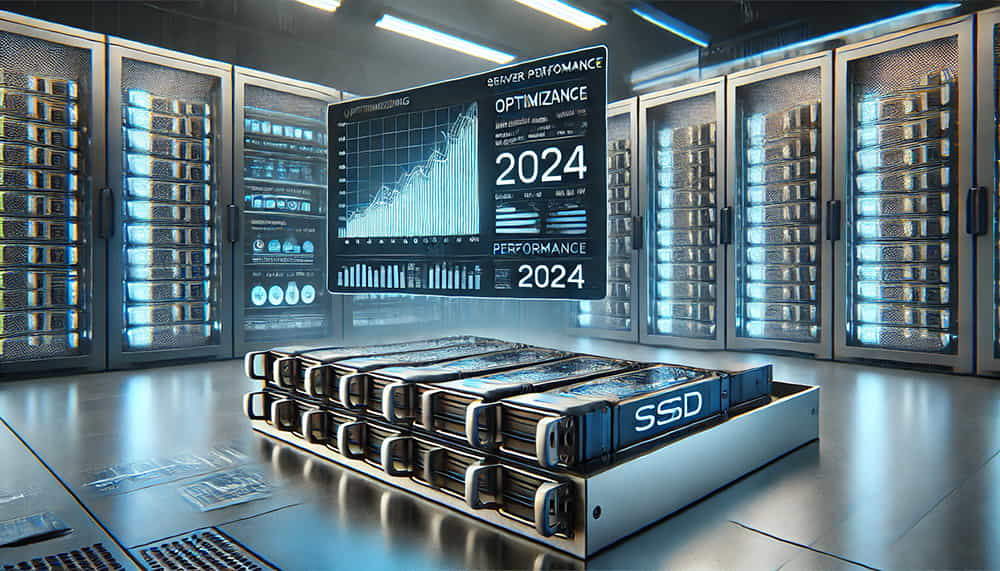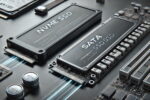Optimizing server performance is crucial to ensure efficiency and speed in data processing. In 2024, the use of SSDs (Solid State Drives) has become one of the best ways to improve server performance. In this article, we will look at why SSDs are superior to traditional HDDs, the types of SSDs available for servers, and the advantages they offer.
You can see all the available SSDs at the following link.
Why Choose an SSD Over an HDD?
The evolution of storage technologies has led to a growing preference for SSDs over traditional hard drives (HDDs). Understanding the key differences can help you choose the best option for a modern server.
Read and Write Speed
Read and write speed is one of the most notable advantages of SSDs. Compared to HDDs, SSDs offer significantly lower access times and much faster transfer speeds. This translates into a greater capacity to handle multiple data requests simultaneously, which is essential for servers that handle large volumes of information. In 2024, NVMe SSDs are particularly popular thanks to their ability to offer higher read and write speeds than SATA SSDs and any HDD available on the market.
Reliability and Lifespan
SSDs have no moving parts, unlike HDDs, making them much more reliable and less prone to mechanical failure. This feature is critical in a server environment where reliability is key to minimizing the risk of data loss and avoiding unplanned downtime. Additionally, modern wear-leveling technologies have improved the lifespan of SSDs, allowing them to withstand a high number of write cycles, which is especially important in data-intensive servers.
Types of SSDs Available for Servers
Not all SSDs are created equal, and choosing the right type is essential to making the most of a server’s capabilities.
SATA vs NVMe
SATA SSDs are the more affordable option and represent a significant step up from HDDs in terms of performance. However, NVMe (Non-Volatile Memory Express) SSDs provide a noticeable increase in speed as they are designed to connect directly to the motherboard via the PCIe bus, eliminating typical SATA interface bottlenecks. In 2024, NVMe is the preferred choice for mission-critical applications where performance is paramount.
U.2 and PCIe SSDs
U.2 SSDs and SSDs that connect directly to the PCIe bus offer flexible and powerful options for high-performance servers. U.2s combine the speed of PCIe with a robust connection that allows for easy, scalable RAID configurations, while PCIe SSDs offer the highest performance available, ideal for applications with large real-time data processing needs.
Key Benefits of Using SSDs in Servers
Using SSDs brings with it several important advantages that can make a difference in the performance and efficiency of a server.
Reduced Response Times
With SSDs, system response times are drastically reduced. This means that applications and services hosted on the server are able to respond faster to user requests, improving the overall experience. In business environments where every millisecond counts, such as in database servers and e-commerce applications, this improvement in performance is crucial.
Lower Energy Consumption
SSDs consume less energy than HDDs, which is beneficial not only for the electricity bill but also for the sustainability of the data center. In a world increasingly concerned about energy efficiency and environmental impact, opting for SSDs helps reduce the carbon footprint of IT infrastructure, as well as reducing the heat generated, which contributes to the efficiency of the cooling system.
Conclusion: The Best Option for Servers in 2024
In conclusion, optimizing server performance with SSDs is a strategic decision in 2024. Both for speed and for reliability and energy efficiency, NVMe and PCIe SSDs are positioned as the best options for server environments that require high speed and responsiveness. The ability to handle large workloads efficiently makes SSDs the undisputed choice for any modern server.







